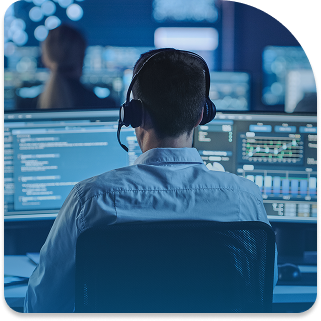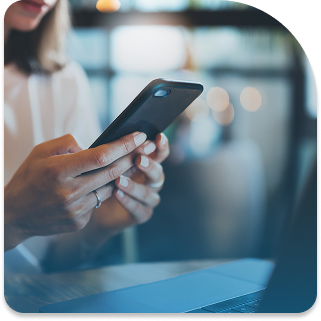Providing quick and effective solutions is more critical than ever, especially in today’s fast-paced business world. One key metric that companies focus on is first-call resolution (FCR). It’s an important factor that enhances customer satisfaction and boosts operational efficiency.
But what exactly is first-call resolution, and how does it benefit businesses? In this blog, we’ll dive into the first-call resolution definition, discuss its meaning, explore its benefits, and provide a first-call resolution example to illustrate how it works in practice.
Table of Contents
Understanding First Call Resolution
First-call resolution is a metric used in customer service to measure an agent or team’s ability to resolve a customer’s issue, question, or request during the initial interaction. In simpler terms, it means addressing and solving the problem on the first call without the need for follow-up contact or escalations.
The definition of first-call resolution can vary slightly depending on the industry or company, but at its core, it refers to the percentage of customer inquiries or issues that are ultimately resolved in the first interaction.
Whether the interaction is via phone, chat, email, or social media engagements, the goal remains the same: solving the customer’s issue as quickly as possible.
The Importance First-Call Resolution In Customer Service

When exploring the meaning of first-call resolution, it’s important to recognize its role in customer experience.
First-call resolution reflects the well-trained, knowledgeable, and empowered nature of our customer service agents. Their ability to resolve issues on the first call is a testament to their skills and the trust we place in them.
Achieving high FCR rates means the company is able to deliver satisfactory results to customers without delays, transfers, or the need for further contact.
5 First-Call Resolution Benefits
Implementing first-call resolution can lead to multiple benefits for both the customer and the business. Below are the top 5 advantages of focusing on FCR:
1. Enhanced Customer Satisfaction
One of the primary benefits of focusing on first-call resolution is the significant increase in customer satisfaction. Customers expect quick and effective solutions when they reach out for help.
When businesses resolve issues immediately, it not only reduces frustration but also reassures customers that their time is valued. This positive experience often leads to word-of-mouth referrals, as satisfied customers are more likely to recommend the business to others.
2. Improved Agent Efficiency
By emphasizing first-call resolution, agents can more efficiently handle customer issues. When agents are trained and equipped to resolve problems during the first interaction, it minimizes the need for repeated follow-ups, saving time for both the customer and the business.
Moreover, agents who consistently resolve issues on the first call develop greater confidence in their abilities, empowering them to handle a wider range of concerns without the need for escalation.
As agents become more capable, the overall service operation becomes smoother, improving productivity across the board.
3. Cost Savings For The Business

Cost savings are another significant first-call resolution benefit. Each time an issue is resolved on the first contact, it reduces the need for additional resources, such as follow-up calls or escalations to higher-level support.
Fewer repeat interactions result in lower operational costs, as agents can handle more customers in less time.
Additionally, reducing the time spent on solving the same problem multiple times can cut down on agent burnout, leading to lower turnover rates and decreased training costs for new hires. Over time, these savings can significantly impact the company’s bottom line.
4. Increased Customer Retention
Customers tend to stay loyal to brands that provide fast and efficient service. High first-call resolution rates lead to satisfied customers who can quickly rely on the company to address their concerns. This level of trust is key to fostering long-term customer relationships and reducing churn rates.
When customers feel their issues are taken seriously and resolved promptly, they are less likely to look for alternatives. In competitive industries, offering a seamless service experience can keep customers coming back.
5. Better Data For Continuous Improvement
Focusing on first-call resolution gives businesses valuable insights into their customer service operations. By analyzing FCR data, companies can identify recurring issues that are preventing first-contact resolutions.
These patterns may reveal gaps in agent training, process inefficiencies, or common product issues that need attention. Using this data, businesses can make targeted improvements to streamline their service processes, enhance agent training programs, or even address product quality concerns.
This continuous improvement leads to higher FCR rates, better customer satisfaction, and a more effective service operation overall.
First Call Resolution Example

To better understand how FCR works in real-life situations, let’s explore a typical first-call resolution example:
Imagine a customer calling their internet service provider because they’re experiencing slow connection speeds. During the initial call, the agent asks detailed questions, runs diagnostics, and walks the customer through resetting the router.
The customer’s internet speed returns to normal, and the issue is resolved during that first interaction. In this case, the company achieved a first-call resolution because the problem was solved without needing a second call or escalation to another department.
Best Practices For Achieving High First Call Resolution Rates
Improving first-call resolution rates requires strategy and dedication. Here are a few best practices that can help businesses enhance their FCR metrics:
Train And Equip Agents With The Right Tools
To improve first-call resolution, train agents thoroughly and provide the necessary resources. Teach agents how to handle a wide range of customer inquiries and problems.
Regular training ensures they stay updated on product information and troubleshooting methods. Give them access to a knowledge base or guidelines so they can quickly solve problems without escalating them. Well-prepared agents solve issues more efficiently and confidently.
Track And Analyze FCR Metrics

Track FCR metrics regularly to identify areas for improvement. By analyzing common problems that require multiple interactions, you can pinpoint where to improve training or provide additional resources.
Regular monitoring ensures you stay on top of recurring issues and make changes that directly impact first-call resolution performance.
Provide Agents With Easy Access To Information
Ensure agents have quick access to up-to-date information to resolve customer problems on the first call. Whether it’s product details, FAQs, or customer account information, having everything readily available allows them to find solutions faster.
CRM systems and internal knowledge databases keep agents equipped with the correct information. Faster access leads to quicker resolutions, improving your FCR rate.
Simplify Internal Processes
Review internal processes to remove unnecessary steps that slow down issue resolution. Eliminate bottlenecks like requiring multiple approvals before agents can help a customer.
By simplifying workflows, you give agents the freedom to resolve issues quickly. Keep processes streamlined to allow faster, more efficient problem-solving during the first interaction.
Use Clear Communication
Train agents to ask the right questions and listen carefully to ensure they fully understand the customer’s issue. Miscommunication can lead to unresolved problems and follow-up calls.
Clear, direct communication helps agents immediately address the customer’s concern, reducing the need for additional contact. Encourage agents to repeat key details to the customer to ensure they understand the problem and solution.
Encourage Team Collaboration
Promote teamwork across departments to resolve customer issues more effectively. Agents should know when and how to reach out to other teams, such as technical support or billing, to resolve complex issues. Collaborative efforts allow for quicker solutions, even for more complicated problems.
Fostering this teamwork improves first-call resolution and ensures customers get answers without needing follow-up interactions.
Challenges To Achieving First Call Resolution

While the benefits of FCR are clear, achieving high first-call resolution rates can sometimes be challenging. Below are a few common obstacles that businesses may encounter:
Complex Customer Issues
Not all problems can be solved in a single interaction. Highly technical or complex issues may require additional troubleshooting, follow-up, or escalation to a higher level of support, making FCR more challenging to achieve.
Insufficient Training
If agents are adequately trained and have the necessary tools, achieving FCR becomes challenging. With the necessary skills and access to information, agents may be able to resolve issues on the first contact, leading to repeat calls and dissatisfied customers.
Outdated Systems or Technology
Outdated systems and technology can slow down the resolution process. Whether it’s a slow CRM system or a lack of integrated data, these obstacles prevent agents from working efficiently, resulting in lower first-call resolution rates.
Conclusion About First Call Resolution
First-call resolution is a critical metric that reflects the effectiveness of customer service teams. It not only boosts customer satisfaction but also contributes to cost savings and improved efficiency within a business.
Achieving high first-call resolution rates may be challenging, but the long-term benefits far outweigh the obstacles. By focusing on improving FCR, businesses can set themselves apart from competitors and foster lasting customer relationships.
Gear Inc offers expert outsourcing solutions for businesses looking to enhance their first call resolution and overall customer service performance. With our team of highly trained agents and cutting-edge technology, we can help your business achieve higher FCR rates, reduce costs, and improve customer satisfaction.
Contact Gear Inc today to learn how we can tailor our services to meet your customer service needs and set your business up for long-term success.
Frequently Asked Questions About First Call Resolution
How Is First Call Resolution Measured?
First-call resolution is typically measured by dividing the number of issues resolved on the first interaction by the total number of customer contacts. This gives the FCR rate, which is often expressed as a percentage. Businesses may use surveys, call tracking systems, or CRM data to gather this information.
Does First Call Resolution Apply Only To Phone Interactions?
No, first-call resolution applies to any customer interaction, not just phone calls. This includes live chat, email, social media, and even in-person interactions. The goal remains the same: resolving the customer’s issue during the first contact, regardless of the medium.
How Does First Call Resolution Impact Employee Morale?
High first-call resolution rates can positively affect employee morale by giving agents a sense of accomplishment. When agents are able to resolve issues on the first contact, it boosts their confidence and job satisfaction. Conversely, low FCR rates may result in frustration and stress.
What Industries Benefit The Most From High First Call Resolution Rates?
While first-call resolution is important across all industries, sectors such as telecommunications, healthcare, e-commerce, and financial services benefit significantly from high FCR rates. In these industries, resolving customer issues quickly can prevent service interruptions, enhance user experience, and build trust.
Can First Call Resolution Rates Be Too High?
Sometimes, an overly high first-call resolution rate can indicate that agents may rush through calls or skip important steps to resolve the issue on the first contact. This could result in incomplete resolutions or poor customer satisfaction in the long run. It’s important to balance FCR with quality.
How Does First Call Resolution Affect Overall Customer Loyalty?
When customers know that their issues will be resolved quickly and efficiently, they are more likely to remain loyal to a brand. Consistently high first-call resolution rates contribute to customer satisfaction, which can enhance long-term loyalty and reduce customer churn.













